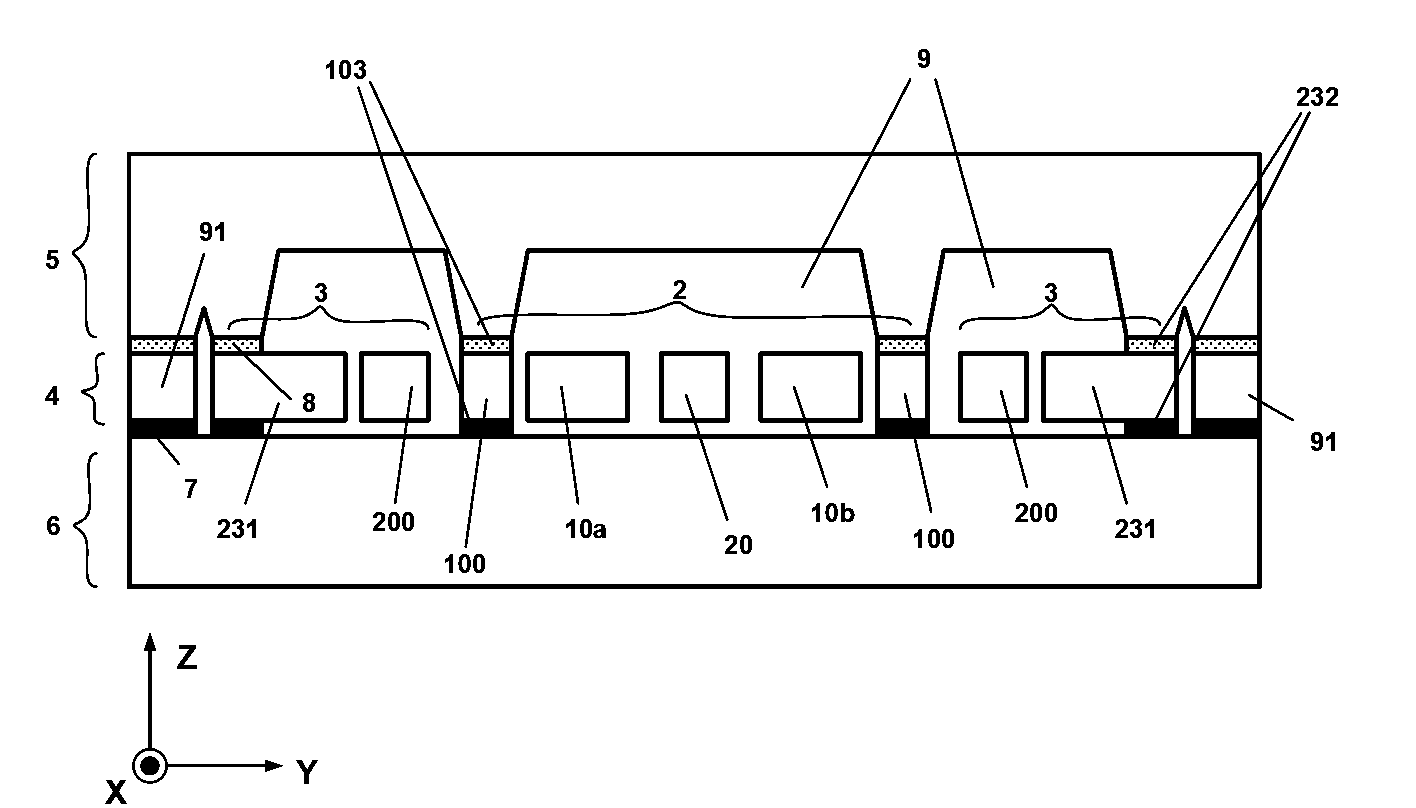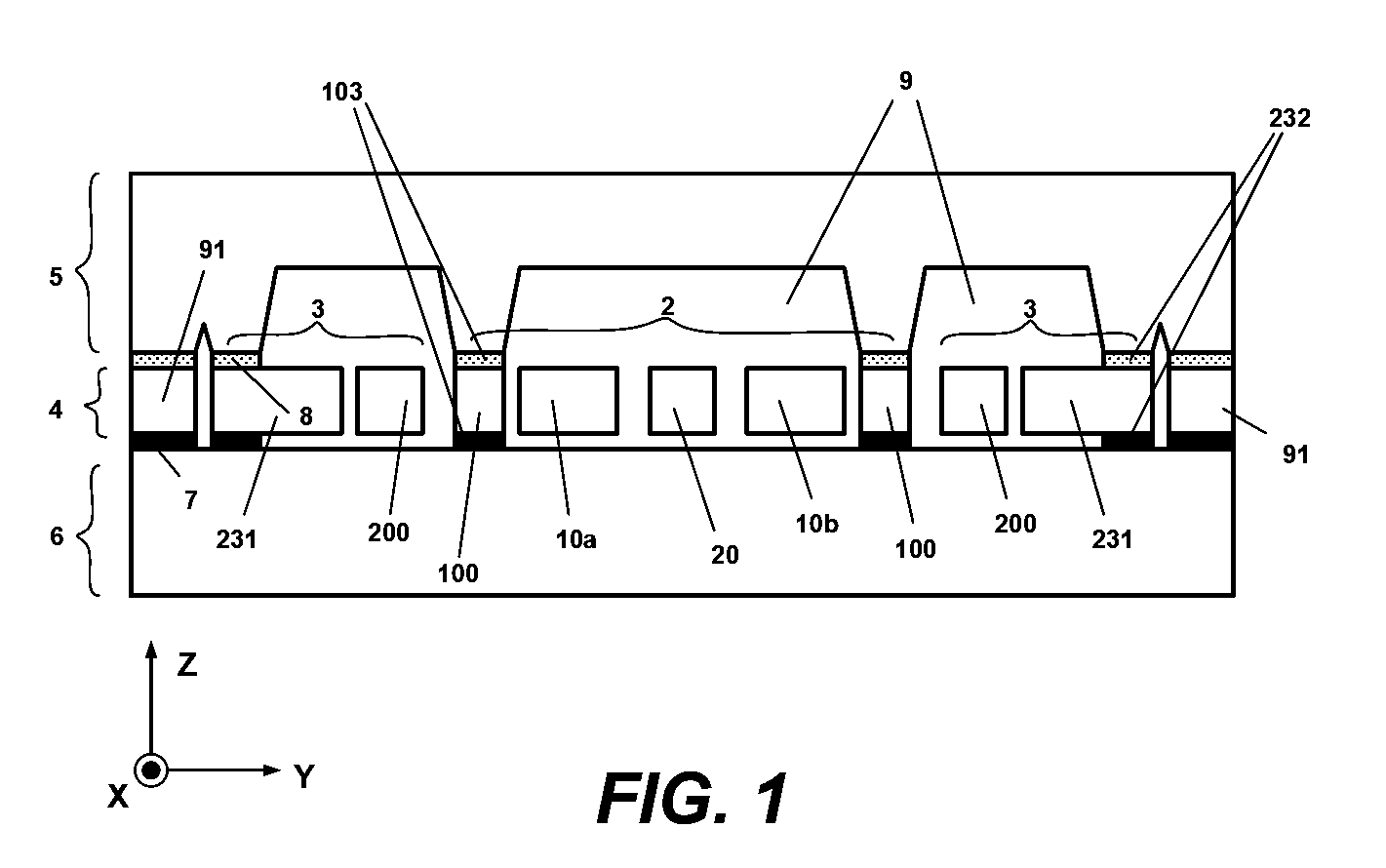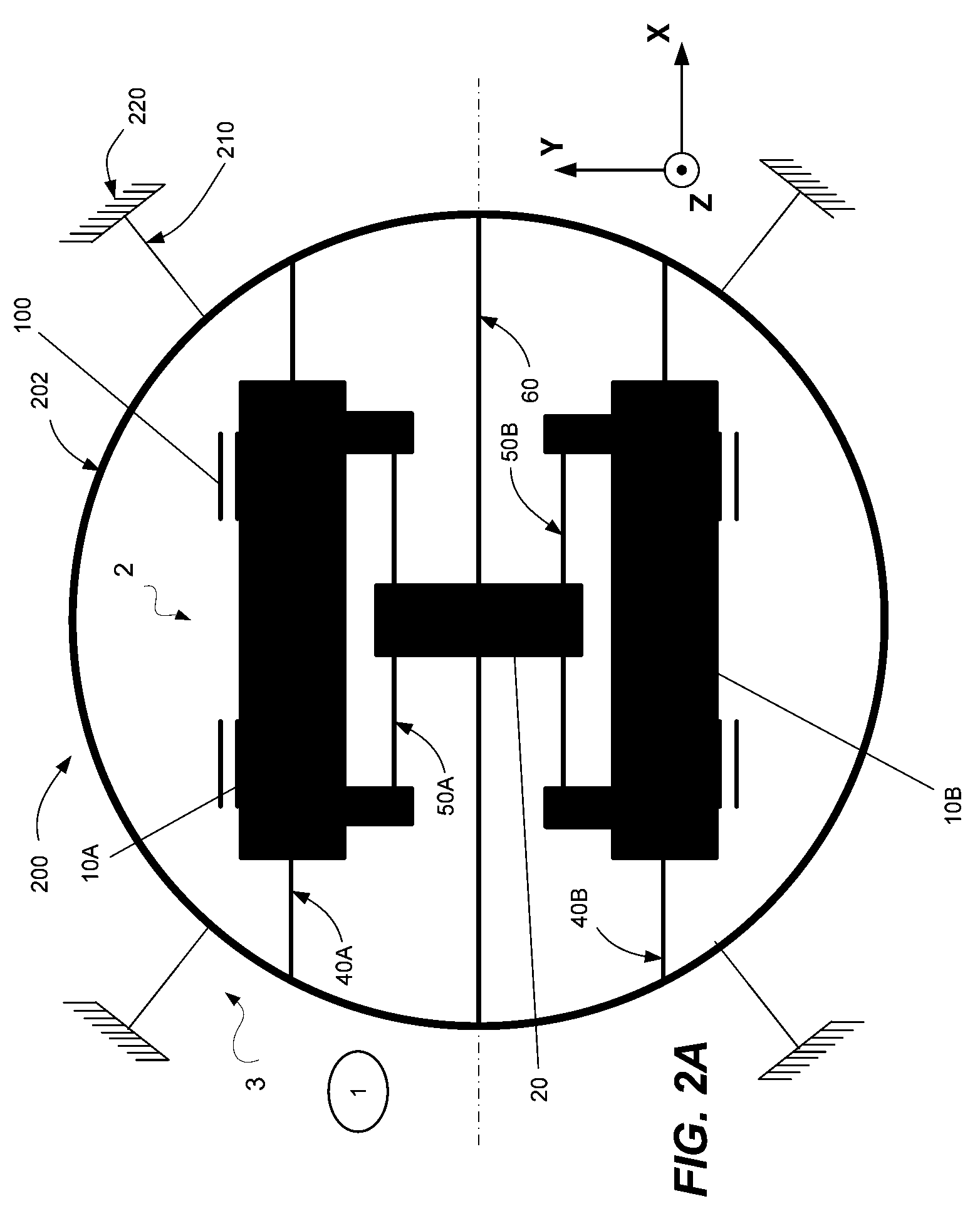Integrated microelectromechanical systems (MEMS) vibrating mass z-axis rate sensor
a microelectromechanical system and vibrating mass technology, applied in the direction of instruments, devices using electric/magnetic means, acceleration measurement using interia forces, etc., can solve the problems of inconvenient extension of structural designs associated with one class to the other class, cost associated with conventional z-axis rate sensors is generally prohibitive for any use in the consumer market, and the z-axis rate sensors are not the most efficient in size and power consumption
- Summary
- Abstract
- Description
- Claims
- Application Information
AI Technical Summary
Benefits of technology
Problems solved by technology
Method used
Image
Examples
Embodiment Construction
[0021]The present invention relates generally to microelectromechanical systems (MEMS) devices. The following description is presented to enable one of ordinary skill in the art to make and use the invention and is provided in the context of a patent application and its requirements. The present invention is not intended to be limited to the implementations shown but is to be accorded the widest scope consistent with the principles and features described herein.
[0022]FIG. 1 illustrates a cross-section of an angular velocity sensor assembly fabricated from a MEMS device layer 4, a cover wafer 5, and a reference wafer 6. In one implementation, sensing subassembly is implemented in the MEMS device layer which is parallel to the sensing plane. In one implementation, the sensing subassembly is attached to base plate 1 that is parallel to the plane and the sensing subassembly measures rate of rotation of base plate around the axis normal to the plane. In one implementation base plate may ...
PUM
 Login to View More
Login to View More Abstract
Description
Claims
Application Information
 Login to View More
Login to View More - R&D
- Intellectual Property
- Life Sciences
- Materials
- Tech Scout
- Unparalleled Data Quality
- Higher Quality Content
- 60% Fewer Hallucinations
Browse by: Latest US Patents, China's latest patents, Technical Efficacy Thesaurus, Application Domain, Technology Topic, Popular Technical Reports.
© 2025 PatSnap. All rights reserved.Legal|Privacy policy|Modern Slavery Act Transparency Statement|Sitemap|About US| Contact US: help@patsnap.com



